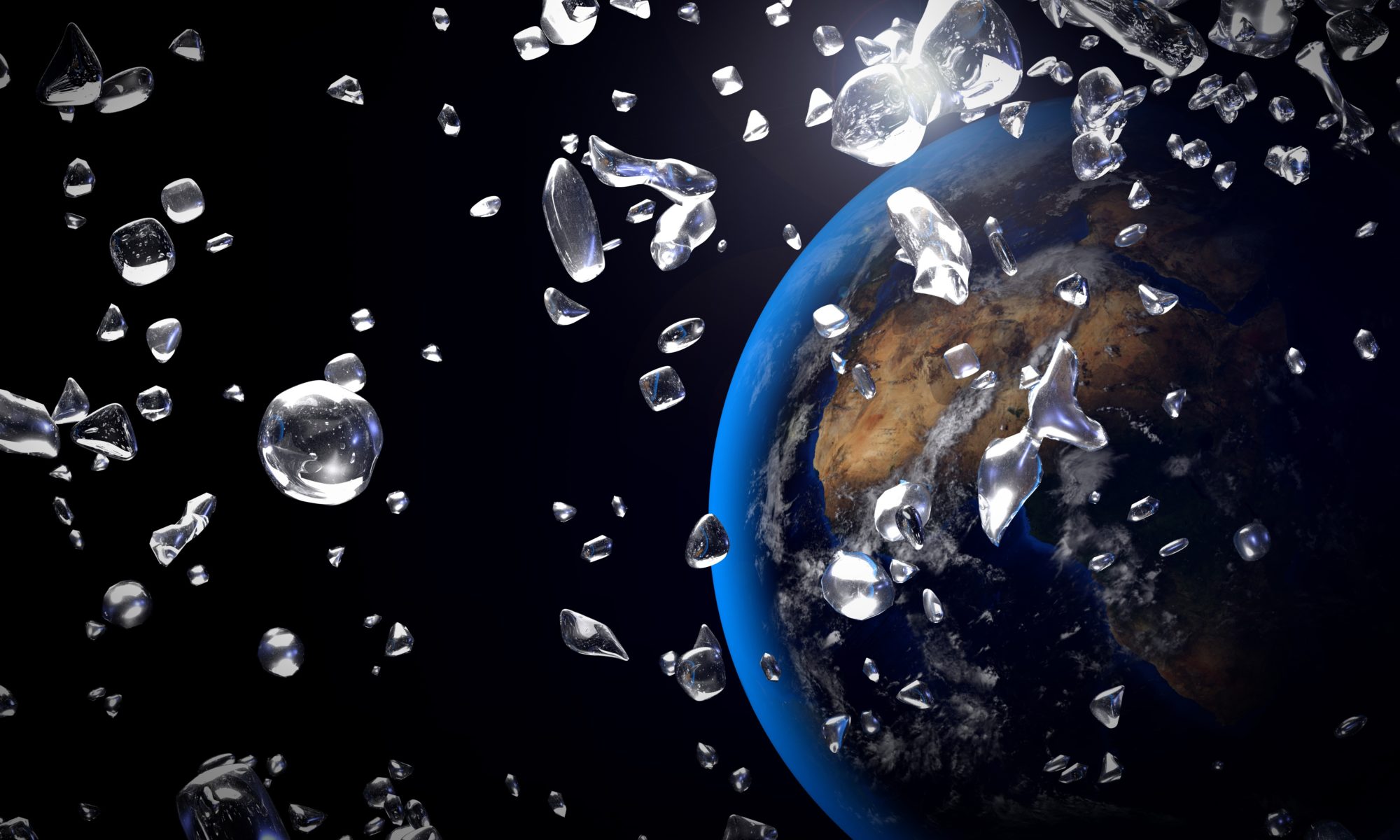Paper: Earth’s water may have been inherited from material similar to enstatite chondrite meteorites
Authors: Laurette Piani, Yves Marrocchi, Thomas Rigaudier, Linel G. Vacher, Dorian Thomassin, Bernard Marty
To date, Earth is the only planetary object known to have extensive bodies of liquid water (H2O) at its surface. Water is fundamental to supporting life as we know it with every single organism on our planet requiring water to survive. Even our own human bodies are made up of 60-70% water. However, the origin of Earth’s water has long been debated.
In the early Solar System, Earth was much closer to the Sun. In this scenario many scientists believe conditions would have been too hot for rocky objects to retain their water. Baked dry from the Sun’s heat, these early formed rocky objects therefore likely acquired their water from elsewhere.
Water-rich asteroids and/or comets from the outer Solar System have long been suggested as the source of Earth’s water (and that of the Moon’s). One approach to tracing (or “chemically fingerprinting”) the origin of water is through the application of hydrogen isotope geochemistry. In H2O, the hydrogen atoms exist in different forms: a heavy variety (D) and a light variety (H). These variations exist due to differences in the number of neutrons in the hydrogen atom. As the different varieties of hydrogen are not easily converted to each other, the ratio of the heavy isotope to the light isotope (D/H) can act as a chemical fingerprint of waters’ origin. By comparing the D/H fingerprints of water on other rocky bodies to water on Earth, we can begin to better understand where Earth’s water may have originated.
Rocky objects throughout our Solar System have a wide range in D/H values. A recent 2019 study by Dariusz Lis and coauthors however reported a D/H value from comet 46P/Wirtanen which intriguingly matched the D/H value of Earth’s oceans. This similarity indicated the potential for these types of comets to be the source of Earth’s water.

A recent 2020 study by Laurette Piani and coauthors however offers a different perspective, one which challenges the idea that water was delivered relatively late to Earth from materials (e.g., comets, asteroids) that originated in the outer Solar System. The authors studied a group of meteorites known as enstatite chondrites (EC). Some scientists have suggested that in the early Solar System it was this particular group of meteorites that accumulated to form Earth. In Piani et al. (2020), the EC group are now proposed as potential contributors to Earth’s water as well. This is based on newly acquired hydrogen isotopic data from 13 of these EC meteorites. Results imply that delivery of “water-rich” materials to Earth from the outer Solar System may not be needed after all.
When compared to the hydrogen composition of Earth’s oceans, the studied EC meteorites were shown to be have a different chemical fingerprint, yet were found to be similar to that of the Earth’s mantle. These compositional similarities are consistent with previous work on other chondrite meteorite types which have also been shown to be compositionally similar to Earth’s mantle. Interestingly though, the ECs are set apart from these other meteorite groups by corresponding nitrogen chemical fingerprints, as the EC group of meteorites is the only group of meteorites that can account for both the hydrogen and nitrogen isotopic fingerprints of Earth’s mantle. Collectively, this implies that EC meteorites play an important role in the establishing the composition of Earth’s mantle.
While the contribution to Earth’s water from other extraterrestrial materials, perhaps from the outer Solar System, cannot be ruled out, the work of Piani et al. (2020) indicates that the source of Earth’s water may have originated a little closer to home than previously thought.
Tracing the origin of Earth’s water with meteorites by Claire McLeod is licensed under CC BY-SA 4.0


